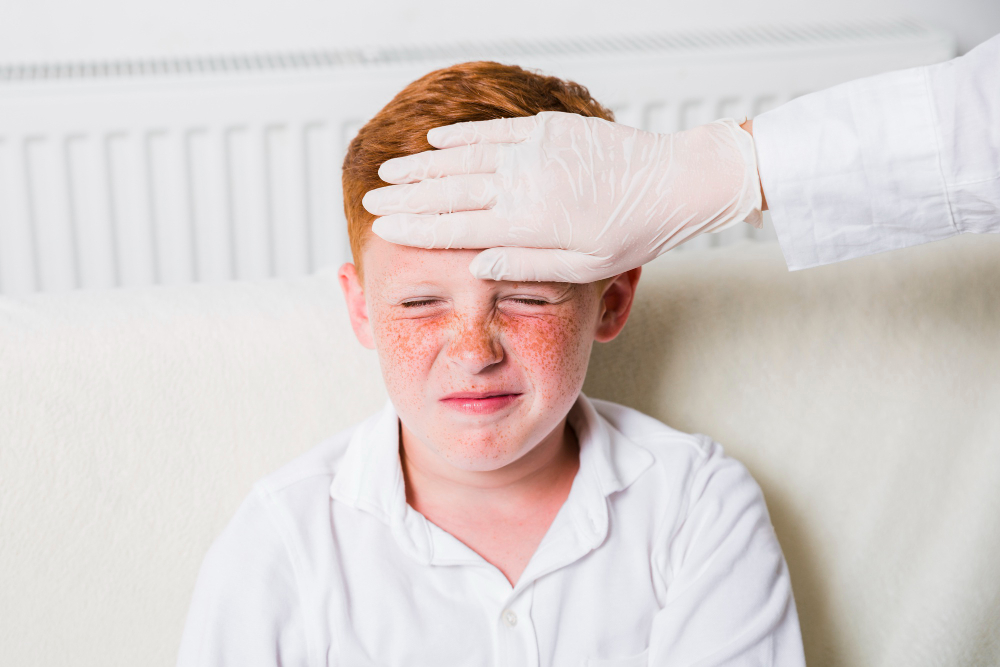Obsessive-compulsive disorder (OCD) and dermatillomania are related but distinct conditions. OCD involves unwanted, repetitive thoughts and behaviors, while dermatillomania specifically refers to compulsive skin picking that can cause harm. Understanding how these disorders overlap can help individuals and caregivers recognize symptoms and seek appropriate treatment.
Both conditions involve compulsive behaviors driven by anxiety or discomfort. Dermatillomania is sometimes considered a subtype or related disorder within the OCD spectrum due to their similar patterns of repetitive actions. However, it requires targeted approaches for management.
Exploring the connection between OCD and dermatillomania sheds light on why these behaviors occur and how they impact mental health. This knowledge supports better coping strategies and improves outcomes for those affected.
Understanding OCD and Dermatillomania
OCD and dermatillomania are distinct but related conditions involving repetitive behaviors driven by intrusive thoughts or urges. Both disorders affect daily functioning and require targeted approaches for management.
Defining OCD
Obsessive-Compulsive Disorder (OCD) is a mental health condition characterized by obsessions and compulsions. Obsessions are unwanted, intrusive thoughts, images, or urges that cause anxiety. Compulsions are repetitive behaviors or mental acts performed to reduce the distress caused by obsessions.
Common compulsions include checking, cleaning, counting, and ordering. OCD symptoms vary in intensity and can severely impair daily life. The disorder has biological and psychological components that contribute to its development. Treatment often includes cognitive-behavioral therapy, especially Exposure and Response Prevention (ERP), and medication.
What Is Dermatillomania?
Dermatillomania, or excoriation disorder, involves repetitive skin picking that leads to tissue damage. The behavior is typically driven by urges to pick at perceived skin imperfections, such as bumps or scabs, even without a medical cause.
This disorder causes visible skin injuries, scarring, and emotional distress. It is classified as a body-focused repetitive behavior (BFRB) and can occur alongside anxiety or mood disorders. Treatment may involve behavioral therapies aimed at interrupting the picking behavior, such as Habit Reversal Training, and sometimes medication.
Key Differences and Overlap
OCD and dermatillomania share compulsive behaviors but differ in focus and function. OCD compulsions aim to neutralize fears related to obsessions, while dermatillomania focuses on skin manipulation, often without clear obsessive thoughts.
Both disorders can co-occur and share features like anxiety and difficulty controlling urges. However, dermatillomania is categorized under BFRBs, while OCD is classified as an anxiety-related disorder. Understanding the distinction helps guide appropriate treatment strategies for each condition.
Managing Symptoms and Treatment Options
Effective management of OCD and dermatillomania involves targeted psychological therapies, medications, and practical coping techniques. Each approach focuses on reducing compulsive behaviors and improving daily functioning.
Therapy Approaches
Cognitive-behavioral therapy (CBT) is the primary psychological treatment for both disorders. Within CBT, Exposure and Response Prevention (ERP) is especially effective for OCD. It gradually exposes patients to feared situations while preventing compulsive responses. For dermatillomania, habit reversal training (HRT) is widely used. HRT involves increasing awareness of skin-picking triggers and teaching alternative behaviors.
Therapy sessions are typically structured and goal-oriented. Patients learn skills to manage urges and modify faulty thought patterns. Success often depends on consistent practice and therapist support over weeks or months.
Medical and Pharmacological Interventions
Selective serotonin reuptake inhibitors (SSRIs) are the first-line medications for OCD and can reduce intrusive thoughts and compulsive urges. Common SSRIs include fluoxetine, sertraline, and fluvoxamine. Dermatillomania may also respond to SSRIs, though evidence is less strong.
In some cases, antipsychotic medications are added when SSRIs alone are insufficient. Patients should be monitored for side effects like weight gain or gastrointestinal discomfort. Medication regimens typically require several weeks to show effects and need to be managed by a psychiatrist.
Coping Strategies for Daily Life
Daily management techniques help minimize symptom impact outside clinical settings. Keeping nails trimmed and using gloves or fidget toys can reduce skin-picking episodes. Structured schedules and stress management, such as mindfulness or relaxation exercises, also support symptom control.
Identifying and avoiding personal triggers—like boredom, anxiety, or specific environments—helps lower compulsive behavior frequency. Support groups or online communities provide encouragement and practical advice for maintaining progress.



